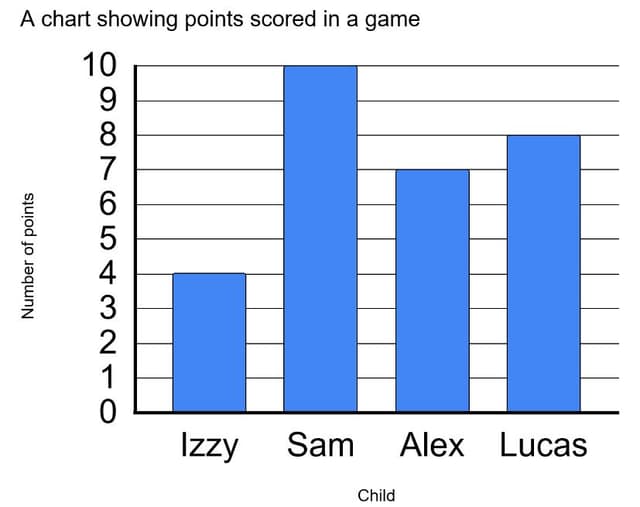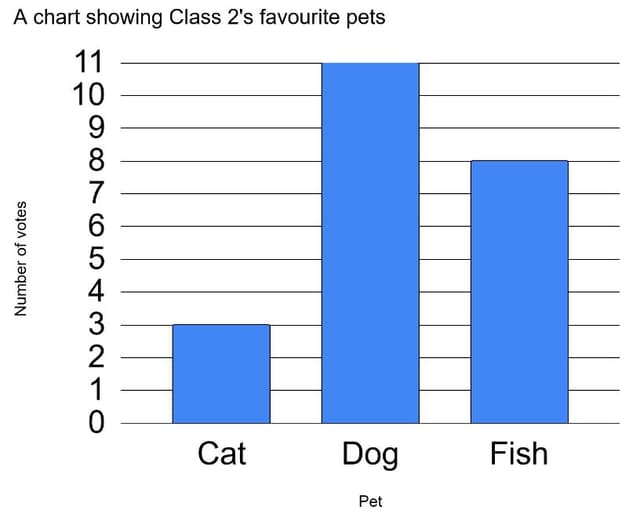Myths about teaching can hold you back
- Year 2
Use knowledge of calculating within 20 to solve problems involving statistics
I can use knowledge of calculating within 20 to solve problems involving statistics.
- Year 2
Use knowledge of calculating within 20 to solve problems involving statistics
I can use knowledge of calculating within 20 to solve problems involving statistics.
These resources will be removed by end of Summer Term 2025.
Switch to our new teaching resources now - designed by teachers and leading subject experts, and tested in classrooms.
These resources were created for remote use during the pandemic and are not designed for classroom teaching.
Lesson details
Key learning points
- When adding three addends, it is efficient to first add two addends using a known fact e.g. pair to 10 or double.
- When adding, we can bridge 10 by partitioning a part so that we can ‘make 10’.
- When subtracting, we can bridge 10 by partitioning a part to create a part that is equal to the ones digit of whole.
- The difference can be found through subtraction.
Keywords
Interpret - Understand and give meaning to mathematical data.
Efficient - Not wasting time or effort. An efficient strategy is one we can carry out easily.
Bridge 10 - Addition or subtraction that crosses the 10 boundary.
Difference - The result of subtracting one number from another. Way in which two or more things we are comparing are not the same.
Common misconception
Children may struggle to correctly read the information presented within the pictogram/bar chart.
A ruler can be used to help children line up the top of the bar with the scale. Model this as a strategy to support accurate reading.
To help you plan your year 2 maths lesson on: Use knowledge of calculating within 20 to solve problems involving statistics, download all teaching resources for free and adapt to suit your pupils' needs...
To help you plan your year 2 maths lesson on: Use knowledge of calculating within 20 to solve problems involving statistics, download all teaching resources for free and adapt to suit your pupils' needs.
The starter quiz will activate and check your pupils' prior knowledge, with versions available both with and without answers in PDF format.
We use learning cycles to break down learning into key concepts or ideas linked to the learning outcome. Each learning cycle features explanations with checks for understanding and practice tasks with feedback. All of this is found in our slide decks, ready for you to download and edit. The practice tasks are also available as printable worksheets and some lessons have additional materials with extra material you might need for teaching the lesson.
The assessment exit quiz will test your pupils' understanding of the key learning points.
Our video is a tool for planning, showing how other teachers might teach the lesson, offering helpful tips, modelled explanations and inspiration for your own delivery in the classroom. Plus, you can set it as homework or revision for pupils and keep their learning on track by sharing an online pupil version of this lesson.
Explore more key stage 1 maths lessons from the Calculating within 20 unit, dive into the full primary maths curriculum, or learn more about lesson planning.

Equipment
Licence
Prior knowledge starter quiz
6 Questions
Q1.Class 2 make a pictogram to show the number of minibeasts they found in their garden. How many worms did Class 2 find?

Q2.How many woodlice, ladybirds and snails did Class 2 find altogether?

Q3.How many more ants did Class 2 find than worms?

Q4.Izzy, Sam, Alex and Lucas play a game. They make a bar chart of points scored.
How many points did Lucas score?

Q5.Izzy, Sam, Alex and Lucas play a game. They make a bar chart of points scored.
How many fewer points did Alex score than Lucas?

Q6.Laura, Sofia, Jun and Andeep play a game. They record their points in a table and plan to draw a bar chart. Using the table below, how many more points did Andeep score than Laura?

Assessment exit quiz
6 Questions
Q1.Class 2 record their favourite primary colour as a pictogram. How many children chose yellow as their favourite colour?

Q2.Class 2 record their favourite primary colour as a pictogram. How many more children voted for yellow than red?

Q3.Class 2 record their favourite primary colour as a pictogram. How many children in the class voted for their favourite colour altogether?

Q4.Class 2 record their favourite pet as a bar chart. How many children chose fish as their favourite pet?

Q5.Class 2 record their favourite pet as a bar chart.
How many children chose either a cat or a dog as their favourite pet?

Q6.Class 2 record their favourite pet as a bar chart.
What is the difference between the number of children that chose a fish and the number of children that chose a dog?



